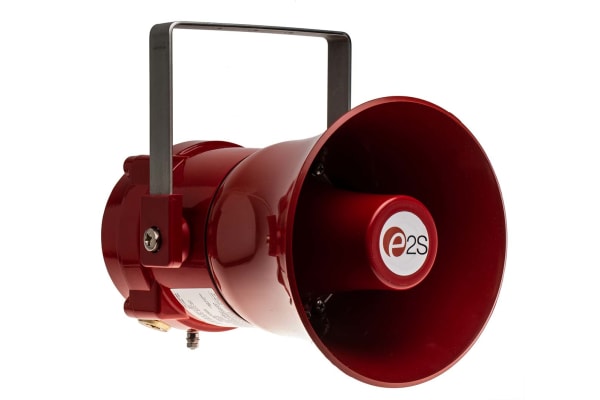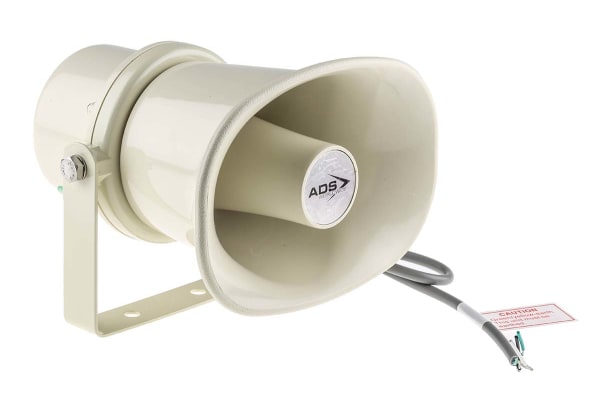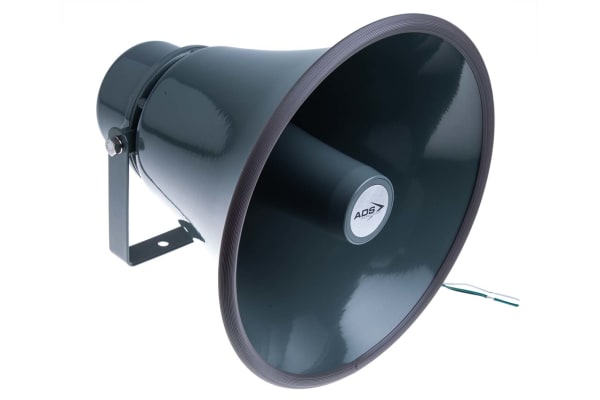Horn Speakers
A horn speaker is also commonly referred to as a loudspeaker. They are widely used for public address in large venues such as, theatres, auditoriums and sports stadiums.Shapes of Horn SpeakerThe main characteristic of a horn speaker is its shape. The throat part is connected to a speaker, the neck is the length of the horn and the mouth is the end part connected to the air. Common horn profiles are:• Parabolic and conical which are easy to design but have poor impedance conversion• Exponential has good wide band impedance conversion but some nonlinearity• Hyperbolic has good and high impedance conversion but relative nonlinearity• Stepped has high impedance conversion, however nonlinearity depends on step resolutionHorn speakers have swivel brackets, are durable, weather-resistant and can be easily mounted inside or outside.How Does a Horn Speaker Work?Horn speakers have a radiating diaphragm that moves back and forth to push the air. The larger the diaphragm the more air is moved and thus increasing the sound energy.The horn itself gradually changes in diameter. The source of the sound at the horn throat engages with the air in the horn and then exits the horn mouth turning a soft sound into a loud one.Types of Horn Speakers• Bi-directional – Twin re-entrant horns for bi-directional projection.• Wide dispersion – Rotatable horn flare, weatherproof.• Re-entrant – Weatherproof, vandal resistant for applications in hostile environments.• Explosion proof – For signal and communication systems.• Paging – Weatherproof design swivel base for easy aiming.
-
e2s Horn Speaker, 15W, ATEX, Aluminium, IP66, IP67
IDR8,108,731.23 -
RS PRO Horn Speaker, 10W, ABS, IP66
IDR1,339,445.30 -
RS PRO Horn Speaker, 15W, Metal, IP66
IDR1,062,535.70 -
RS PRO Horn Speaker, 30W, ABS, IP66
IDR3,243,303.69 -
RS PRO Horn Speaker, 30W, Metal, IP66
IDR1,127,252.83 -
Visaton Horn Speaker, 10W, IP67
IDR2,083,325.18








